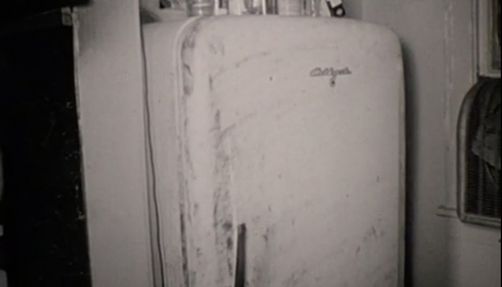On June 23, 1965, Houston police captain Charles Bullock and his partner, L. M. Barta pulled up outside 1815 Driscoll Street. They were following up on a call from Marvin Martin, who was concerned about his uncle and aunt, Fred and Edwina Rogers. He hadn’t heard from them in days, and they wouldn’t answer the telephone. The couple were both rather old, so Bullock and Barta had been sent to do what they thought would be a routine welfare check.
Fred, 81, and Edwina, 79, lived in the house with their adult son Charles. Though most neighbors didn’t know that. Charles was something of a recluse, leaving the house before sunrise and returning late at night. Despite living with them, he also had very little contact with his parents, communicating only through notes slipped under the door to his bedroom in the attic.
Before the officers even entered the house, things seemed off. They couldn’t open the back door and when they peered through the window, they saw several flower pots stacked up against it. Once they managed to get inside, Barta went upstairs while Bullock headed for the kitchen. It seemed Fred and Edwina were not home.
Related: 11 Disturbing True Crime Stories You Can Read Tonight

The fridge that contained Fred and Edwina's remains.
Photo Credit: KHOU-TVA gruesome discovery in the ice box
Accounts differ on why Bullock opened the fridge, and Bullock himself was unable to recall exactly why in later interviews. He found the fridge chock full of what he thought was butchered hog meat. Since it seemed that the Rogers’ weren’t home, Bullock thought it was odd they had so much meat that would go to waste. But just as he was about to close the door, he glanced down at the vegetable drawer and saw something that shocked him: a woman’s head.
Bullock closed the refrigerator door and re-opened it, and indeed the head was still there. Further investigation revealed a man’s head in the other bin. He and Barta immediately called for backup.
Once more officers arrived, their suspicions were confirmed. The fridge was not stacked with hog meat, but the remains of Fred and Edwina Rogers. Their bodies had been carefully dismembered and packed into the fridge. As the medical examiner on the case told the Amarillo Globe-Times in an article published the next day, “whoever did this apparently took their time and knew what they were doing.”
Autopsies revealed that the couple had died on June 20—Father’s Day. Edwina was killed by a shot to the head while Fred was bludgeoned to death with a claw hammer. Fred’s eyes had also been gouged out and his genitals had been removed. Their house had been thoroughly cleaned before the police showed up, but investigators did find blood in the bathroom, suggesting their bodies had been butchered there.

Authorities remove the remains from the scene.
Photo Credit: KHOU-TVA trail of bloody clues in the Icebox Murders case
From the moment the investigation started, one question dominated in the minds of police: where was Charles? As the presumed only surviving resident of the home, he could provide essential information. But beyond that, evidence seemed to suggest he had a much larger role to play in the case.
Besides the bathroom, the only other blood found in the house was on the keyhole of Charles’ bedroom door. Police also found a handsaw in the room. This combined with his reclusive nature and seemingly cold relationship with his parents quickly directed suspicion towards Charles. To date, he is the only suspect in the case.
Authorities launched a massive manhunt for Charles. Since he had served as a pilot in World War II, they checked the records of airfields in the area to see if anyone who matched his description had left by plane, but they couldn’t find any leads. No trace of Charles was ever found and he was declared dead in 1975. The murder remains unsolved to this day.

A handsaw.
Photo Credit: Matt Artz / UnsplashThe Ice Box Murders remain unsolved
In the ensuing decades, many people have attempted to solve the mystery of the Ice Box Murders and particularly what happened to Charles. A bizarre theory was first raised in the 1992 book The Man on the Grassy Knoll by John R. Craig and Philp A. Rogers. The authors claimed Charles was a secret CIA agent who had been involved in the assassination of President John F. Kennedy less than two years before the murders. When his parents discovered diary entries that proved his involvement, he killed them.
A far less sensational theory was posed in the book The Ice Box Murders, published in 2003 by Hugh and Martha Gardenier, a Houston couple who began their investigation into the murders in 1997. They argue that Charles murdered his parents after a lifetime of emotional and physical abuse which had taken the form of defrauding him by the time of the murders. Most of the abuse had come from Fred, which would explain why his death was so much more violent than Edwina’s. After he killed his parents, the Gardeniers hypothesize that Charles used his connections in the oil industry from the nine years he spent working at the Shell Oil Company to escape to Mexico.
Although few doubt Charles Rogers’ guilt in the death of his parents, what happened on June 20, 1965 remains a mystery—an unsolved true crime puzzle that still haunts us.
Featured image: Michal Matlon / Unsplash
